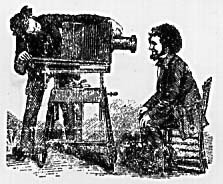1.) Joe Sacco's
2.) The main issue of the graphic novel is the misunderstanding of two different "cultures". Issues include, faith in ones own religion/culture, oppression by others and identity. The ideas the novel creates is that there are always two sides to a story, people will always talk about something but not many will actually follow through, and that many people will treat others how they were treated once.
3.) The visual style of the graphic novel is simple but very effective. Sacco uses enough words to tell us what is happening in the pictures, but also not enough so that we must pay attention to the visual pictures as well to get the full story. In his visuals he has many people doing many things. His pictures seem to be very complex. This helps by showing the emotions of the Jews and Palestinians and they treated each other, and because we see something we can believe it is more real than if we just read it, whether it be a drawing or a photograph. Also Sacco makes the panels of the novel more scattered and speech bubbles more confusing and harder to read in a certain order when violence seems to take place, just like how the streets would be when violence breaks out and there are people running and fighting in all different directions, chaos.
announcements
This blog was created by and for students in an Introduction to Cultural Studies class at the University of Washington. Through an investigation of urban experience and representation--in theory, in graphic novels and in our own "readings" of Seattle's University District--we considered the formation and history of cultural studies as an (anti)discipline, with a special emphasis on the questions, "What does cultural studies do, and how do you do cultural studies?"
If you'd like to know more about the class, the blog or our U-District artifact project, please contact Gabrielle Dean: gnodean@u.washington.edu.
If you'd like to know more about the class, the blog or our U-District artifact project, please contact Gabrielle Dean: gnodean@u.washington.edu.
Wednesday, May 7, 2008
Palestine
Subscribe to:
Post Comments (Atom)
blog archive
-
▼
2008
(92)
-
▼
May
(26)
- Seattle U District: City Artifacts Map
- City Artifacts: What and Where?
- Researching History and its Representations...
- Palestine
- Persepolis 1 & 2
- Shutterbug Follies
- A Scanner Darkly
- Maus I & II
- A Scanner Darkly
- Maus I & II
- Shutterbug Follies
- Persepolis 1 and 2
- Postcards: True Stories that Never Happened
- Maus I & II
- Postcards: True Stories that Never Happened
- Persepolis 1 & 2
- Mail Order Bride
- Mail Order Bride: Mark Kalesniko
- Persepolis 1 & 2
- Shutterbug Follies
- Maus I and II
- Palestine
- Postcards: True Stories That Never Happened
- PALESTINE
- Postcards: True Stores That Never Happened
- Shutterbug Follies
-
▼
May
(26)

1 comment:
Nate---I agree with all your ideas about the themes and issues. I photocopied a page about the whole two sides to every story, I thought that was important as well...so we can use that.
Do you have page numbers for any of these others? I have a scanner...
Post a Comment